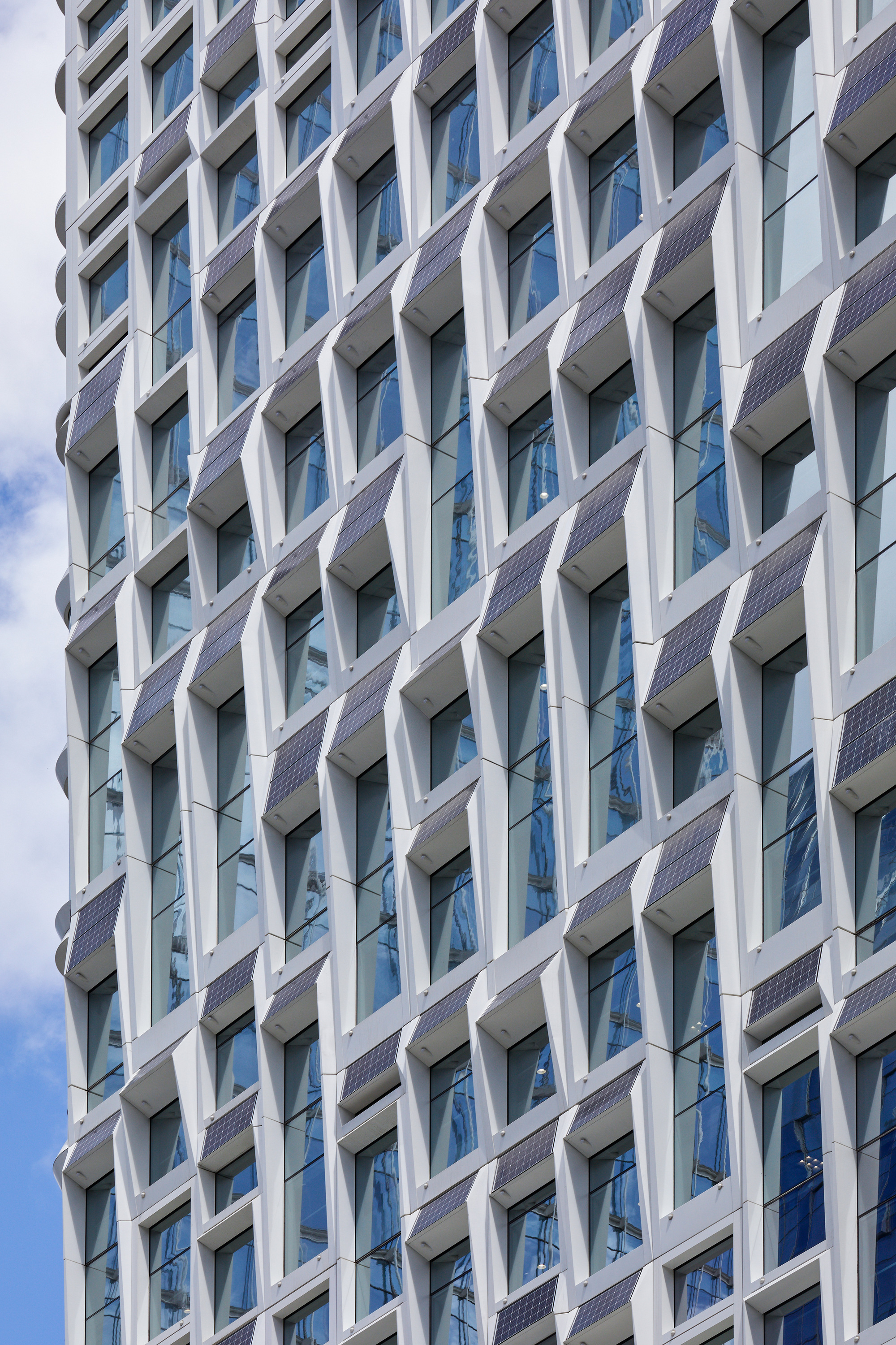Our renovation of the Hanwha Headquarters in Seoul has been completed.
Located on the Cheonggyecheon in Seoul, the 57,696 m2 headquarter building was seen to no longer reflect Hanwha as one of the leading environmental technology providers in the world. For the competition to remodel the tower UNStudio teamed with Arup (sustainability and facade consultant) and Loos van Vliet (landscape designer). Following the selection of the competition design, agLicht joined as lighting consultant.
With this retrofit, the headquarters of the world's market leader in solar panels has been modernised to meet the most up to date sustainability requirements. Based on environmental considerations, a conscious decision was made to remodel the existing building, rather than for demolition and new build.
By way of an efficient construction method, UNStudio and Hanwha were also able to ensure that the employees could continue to work in the building throughout the renovation. The result of this ‘remodelling in place' is a building with a healthy indoor climate, an extremely flexible programme and a completely new, energy-generating facade with integrated solar panels. As such, the building now also effectively expresses the identity and ambitions of the Hanwha Group.
The renovation of the Hanwha office tower lead us to remodel the facade, the interior of the common spaces, lobbies, meeting levels, auditorium and executive areas, along with the redesign of the landscaping.
“By means of a reductive, integrated gesture, the facade design for the Hanwha HQ implements fully inclusive systems which significantly impact the interior climate of the building, improve user comfort and ensure high levels of sustainability and affordability. Through fully integrated design strategies today’s facades can provide responsive and performative envelopes that both contextually and conceptually react to their local surroundings, whilst simultaneously determining interior conditions.”
Ben van Berkel

